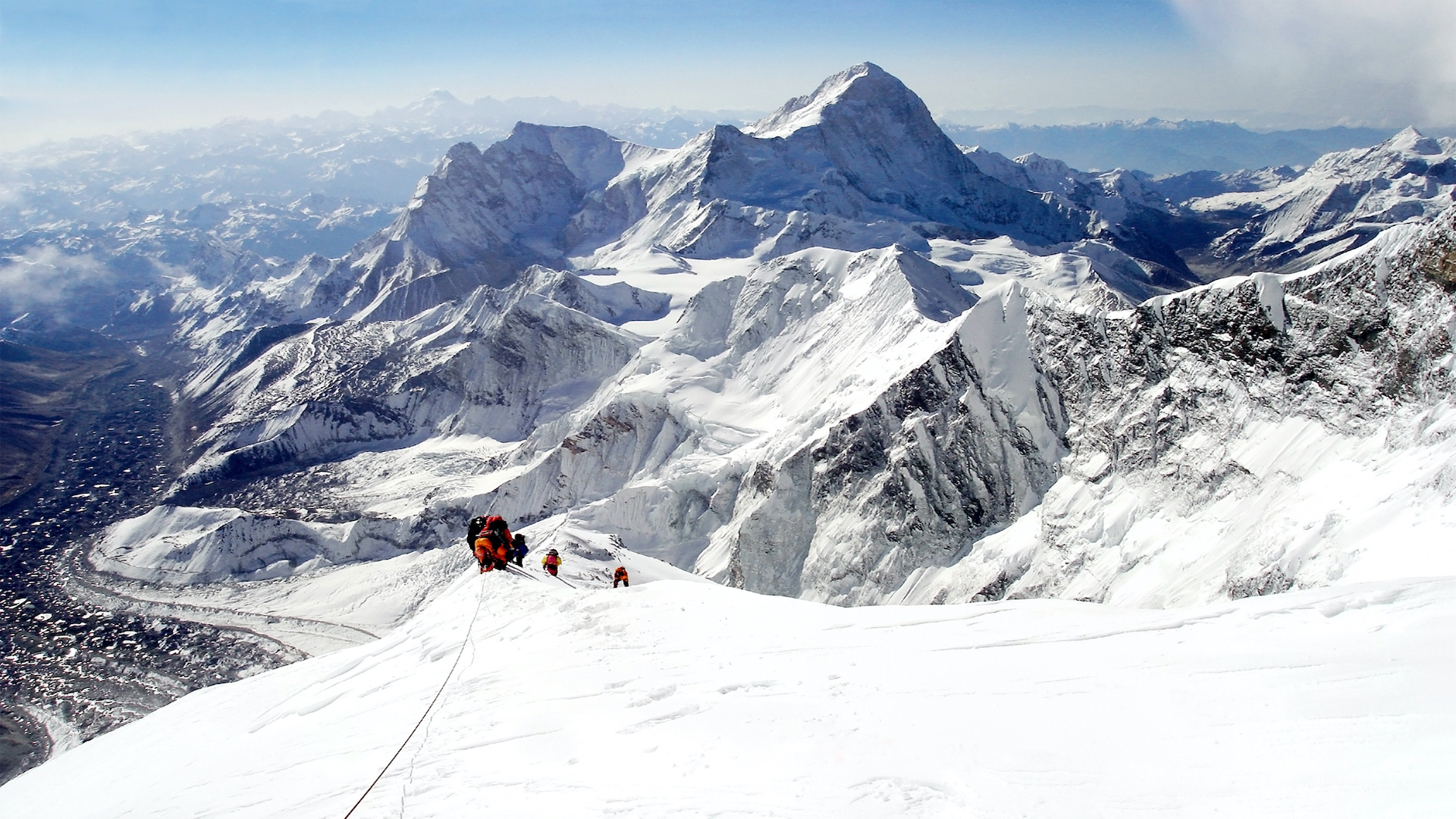What's the highest a mountain can grow on Earth?
Although a mountain could theoretically grow taller than Mount Everest, forces like gravity and erosion work against it.
Sixty million years ago, when the Eurasian plate slammed into the Indian plate, a mountain range was born. Because these plates were of similar density, neither could sink below the other. The rocks had nowhere to go but up.
Now, the Himalayas host Earth's tallest mountains. Mount Everest is the tallest, towering 5.4 miles (8.8 kilometers) above sea level. After Everest, the tallest is K2, which rises 5.3 miles (8.6 km) above Earth's surface.
Could these mountains be any higher? For that matter, how high could any mountain grow on Earth?
Theoretically, a mountain could be "quite a bit taller than Everest," Gene Humphreys, a geophysicist at the University of Oregon, told Live Science. But first it would have to overcome a few challenges that many mountains face as they grow.
For instance, because of Earth's gravitational pull, any pile of rock that grows into a mountain will start to slouch, "much like a wad of bread dough will slowly flatten when placed on a table," Humphreys said.
Related: Is Mount Everest really the tallest mountain on Earth?
Active processes, like erosion, also help keep mountains from growing too tall. Glaciers, vast blocks of slowly moving ice, are especially good at carving up mountains.
Get the world’s most fascinating discoveries delivered straight to your inbox.
Earth scientists refer to glacial erosion as "the glacial buzzsaw because they are so effective at taking the sides off of mountains," Humphreys said. "[Glacial erosion] creates a steep-sided mountain that is then prone to landsliding."
The effects of erosion and gravity mean that "the bigger the mountain, the greater the stresses created by gravity and the stronger the tendency to collapse," Humphreys said. And although Mount Everest "could conceivably get elevated yet higher, its steep south side seems unstable," which might lead to landslides.
However, there are ways a mountain could grow taller than Everest, Humphreys continued. Possibly even 1 mile (1.6 km) taller — but only if the conditions were just right. First, it'd have to be formed from volcanic processes rather than from continental collision. Volcanic mountains, like the Hawaiian Islands, grow as they erupt. Lava flowing out of the volcanoes cools in layers, building the volcanoes higher and higher. And finally, for the mountain to keep growing, it would need a continuing source of magma pumped higher and higher, allowing it to erupt, flow down the mountain's sides, and cool.
This volcanic process is exactly how the solar system's tallest mountain, Mars' Olympus Mons, formed. Towering 16 miles (25 km), Olympus Mons is so tall that it actually pokes through the top of the Red Planet's atmosphere, Briony Horgan, a planetary scientist at Purdue University in Indiana, told Live Science.
Olympus Mons could get so tall because Mars lacks plate tectonics, the large rafts of crust that dominate Earth's geological processes. Olympus Mons formed over a hotspot — a deep well of rising magma — that repeatedly erupted. Just like the Hawaiian Islands, that erupted lava would flow down the sides of the mountain and cool into a new layer of rock.
However, even though the Hawaiian Islands also formed over a hotspot, the Pacific plate keeps moving, so the islands won't stay over the hotspot long enough for their volcanoes to become as large as a mountain like Olympus Mons.
"On Mars if you just have that same hotspot but the plate isn't moving, you can make enormous, enormous volcanoes over the course of hundreds of millions or billions of years of activity," Horgan said.
But even giants like Olympus Mons have a limit. According to Horgan, if the volcano is still active (so far, we haven't observed any current activity), it's likely nearing the end of its growth. This is because the pressure required to continue to pump magma to the top of the mountain might soon be unable to overcome the forces working against it — the height of the mountain and Mars' own gravitational pull.
"You can think of a volcano basically as a pipe that you're trying to pump lava through, and on some level, if it's too big, too high, you don't have enough power to get the lava through," Horgan said.

JoAnna Wendel is a freelance science writer living in Portland, Oregon. She mainly covers Earth and planetary science but also loves the ocean, invertebrates, lichen and moss. JoAnna's work has appeared in Eos, Smithsonian Magazine, Knowable Magazine, Popular Science and more. JoAnna is also a science cartoonist and has published comics with Gizmodo, NASA, Science News for Students and more. She graduated from the University of Oregon with a degree in general sciences because she couldn't decide on her favorite area of science. In her spare time, JoAnna likes to hike, read, paint, do crossword puzzles and hang out with her cat, Pancake.




